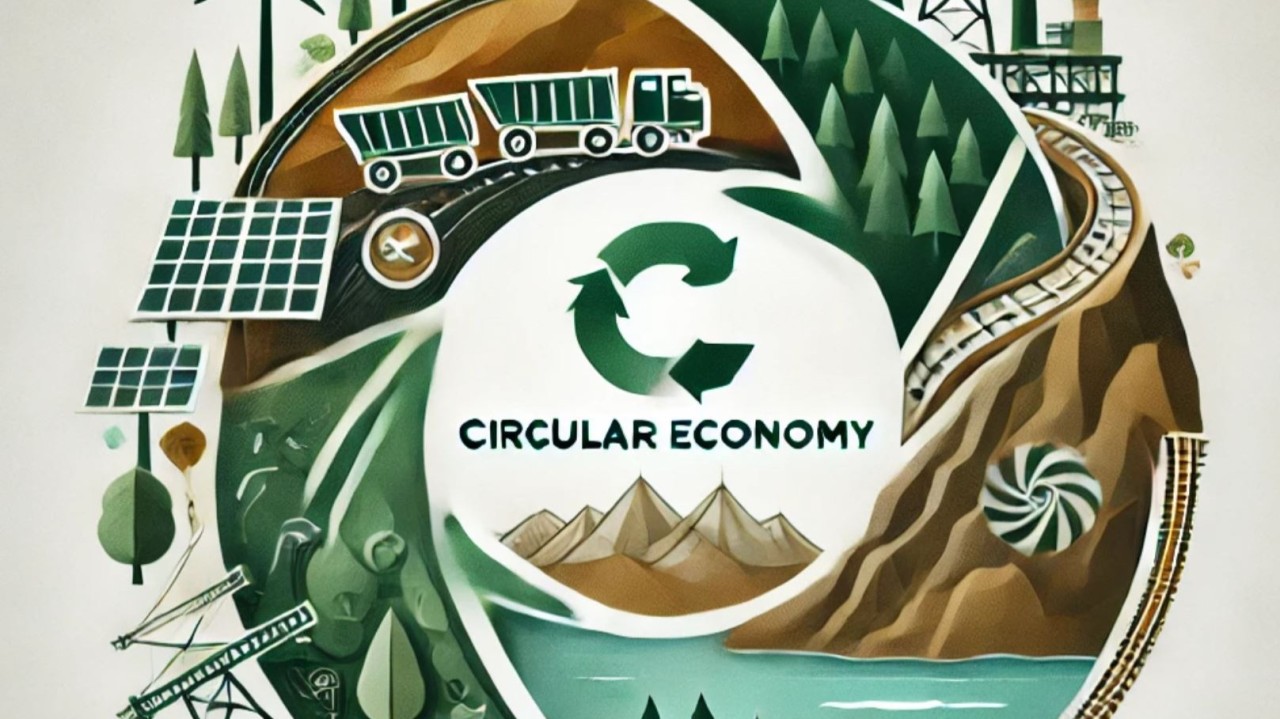As industries shift towards more sustainable operations, mine closure planning is undergoing a significant transformation. Traditionally, mine closures have followed a linear model, where resources are extracted, used, and then discarded. However, by embedding circular economy principles, closures can extend beyond mere compliance to deliver long-term environmental and economic benefits. A key tool enabling this transition is circular flow analysis, which employs various modelling and assessment techniques to identify opportunities for circularity within mine closure strategies.
From Linear to Circular: The Power of Circular Flow Analysis
Circular flow analysis is a suite of quantitative and qualitative methods that examine the movement of materials, energy, waste, and economic value within a system. These approaches help mine closure planners understand how resources circulate within the system, identifying opportunities to retain value, repurpose materials, and close resource loops. This data-driven methodology enables targeted interventions that minimise waste, maximise reuse, and reduce environmental impact.
Key Applications of Circular Flow Analysis in Mine Closure
- Material Flow Analysis (MFA) for Resource Recovery
- Water Flow Modelling for Sustainable Management
- Energy Flow Modelling for Renewable Integration
- Biodiversity and Ecosystem Flow Analysis
Technical Methods for Circular Flow Analysis in Mine Closure
To implement circular economy strategies effectively, several technical methods are employed to analyse and optimise resource flows:
- Material Flow Analysis (MFA)
- A systematic approach to quantifying material movement within a system.
- Helps identify resource recovery opportunities and potential for reuse in mine closure projects.
- Life Cycle Assessment (LCA)
- Evaluates the environmental impact of a mine closure strategy across its entire life cycle, from extraction to rehabilitation.
- Aims to optimise sustainability outcomes by reducing waste and emissions.
- Substance Flow Analysis (SFA)
- Tracks specific chemical substances or pollutants within a mining system.
- Useful for managing contaminants in tailings, mine water treatment, and soil remediation.
- Systems Dynamics Modelling (SDM)
- Simulates complex interactions between material, energy, and economic flows.
- Helps predict long-term sustainability outcomes and informs decision-making in circular mine closure planning.
- Industrial Ecology and Symbiosis Modelling
- Focuses on creating closed-loop systems where waste from one industry serves as input for another.
- Applied to repurpose mining waste in construction, manufacturing, or agriculture.
- Circularity Assessment Models (CAMs)
- Evaluates the circularity performance of a mine closure strategy by mapping resource flows and intervention points.
- Benchmarks sustainability performance against global circular economy standards.
Key Strategies for a Circular Economy in Mine Closure
- Repurposing Mining Infrastructure and Materials
- Reusing mine buildings and equipment for alternative industries such as vertical gardens, manufacturing, research, tourism, or intensive agriculture or aquaculture.
- Deconstructing and salvaging materials such as steel, concrete, and machinery for reuse in new construction projects or other existing projects.
- Considering former tailings storage facilities as sources of secondary minerals through advanced re-processing technologies.
- Maximising Beneficial Land Use
- Converting decommissioned sites into renewable energy hubs, such as solar or wind farms.
- Creating new agricultural or forestry projects, turning rehabilitated land into productive farming zones, considering manufacturing, vertical gardens, etc.
- Circular Water Management and Ecosystem Rehabilitation
- Designing closed-loop water treatment systems to ensure mine water is treated and reused efficiently for other long term beneficial uses.
- Applying bioengineering techniques to restore soil and water quality in degraded mine landscapes.
- Creating artificial wetlands and natural filtration systems to support local biodiversity while improving water management.
Global Case Studies in Circular Mine Closure
- Kidston Gold Mine, Australia – Renewable Energy Repurposing
At the Kidston Gold Mine in Queensland, Australia, circular flow analysis was used to assess the feasibility of pumped hydro energy storage, repurposing former mine pits as reservoirs. This approach created an efficient closed-loop water system, ensuring sustainable energy production. - Eden Project, United Kingdom – Quarry to Ecotourism Hub
The Eden Project in Cornwall, UK, transformed a former clay quarry into an ecotourism and educational facility. Flow modelling played a key role in designing a self-sustaining water system and enabling waste repurposing in construction. - LKAB, Sweden – Circular Mining Waste Use
Swedish mining company LKAB leveraged circular flow analysis to track phosphorus and rare earth elements in mining waste, facilitating resource recovery for fertiliser and battery production. - Sudbury, Canada – Ecosystem Restoration with Circular Water Management
The Sudbury Basin in Ontario, Canada, employed water and soil flow modelling to guide reforestation and wetland creation, ensuring biodiversity restoration. - Zeche Zollverein, Germany – Industrial Heritage Redevelopment
At Zeche Zollverein, a former coal mine in Germany, industrial ecology modelling guided the redevelopment of infrastructure into business, cultural, and recreational spaces, preserving its historical significance.
The Future of Circular Mine Closure: A Data-Driven Approach
By integrating circular flow analysis into mine closure planning, industry stakeholders can move beyond linear decommissioning to circular, regenerative strategies. This approach is important because it:
- Optimises resource use by tracking materials, water, and energy.
- Reduces waste and emissions through intelligent planning.
- Creates long-term value by repurposing infrastructure and resources.
As expectations evolve, circular flow analysis and circular economy principles will be vital in ensuring that former mine sites become long-term assets rather than environmental liabilities.
